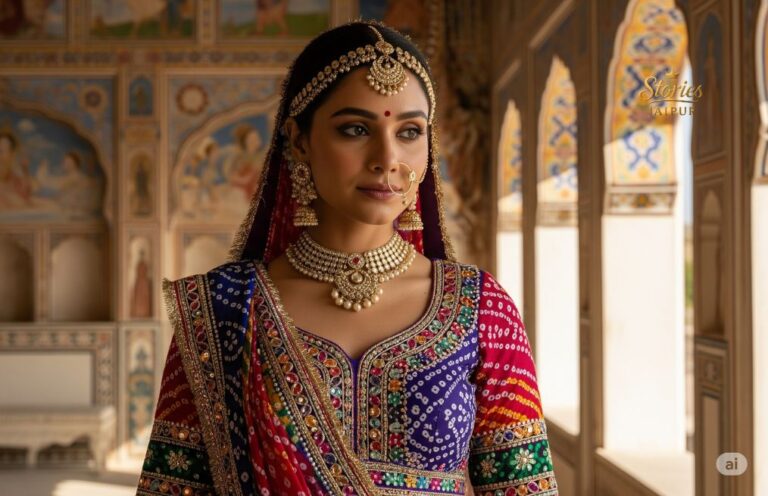Rajasthan, the land of grandeur and vibrant traditions, possesses a fashion identity that is instantly recognisable and deeply cherished. It’s a style born from centuries of royal patronage, cultural customs, and the ingenuity of its people adapting to the arid landscapes. Decoding the iconic elements of Rajasthani fashion reveals a world where every thread, every colour, and every accessory tells a compelling story of heritage, beauty, and enduring craftsmanship.
The Flowing Grace of Ghagra-Choli
For women, the ghagra-choli stands as the quintessential emblem of Rajasthani attire. The ghagra, a long, voluminous skirt, swirls with effortless grace, often adorned with intricate embroidery, mirror work, or traditional prints like bandhani and leheriya. Paired with a fitted choli (blouse) that can range from simple to elaborately embellished, this ensemble creates a silhouette that is both majestic and comfortable. Completing the look is the odhni or dupatta, a versatile veil that is artfully draped over the head and shoulders, adding layers of colour and modesty. This combination forms the very core of Rajasthani feminine elegance.
The Regal Presence of the Pagri
For men, the pagri, or turban, is arguably the most iconic and symbolic element of their attire. More than just headwear, the pagri is a statement of honour, status, and regional identity. Its sheer variety is astonishing, with hundreds of ways to tie it, each indicating a specific community, caste, or occasion. From the broad, circular Marwari pagri to the conical Mewari style, and the vibrant Panchrangi Pagri (five-colored turban), each form is a masterful display of textile art. The colour, fabric, and style of a pagri instantly communicate a man’s story to those who know how to read its silent language.
The Dazzling Art of Gota Patti
Among the most distinctive embellishments in Rajasthani fashion is Gota Patti work. This intricate appliqué technique involves stitching small pieces of zari ribbon (metallic threads, often gold or silver colored) onto the fabric to create elaborate patterns. Historically, gota was made from real gold and silver, signifying wealth and royalty. Today, while often made with imitation zari, gota patti continues to add a shimmering, regal touch to ghagras, odhnis, and ethnic wear, reflecting light and bringing designs to life. It’s a labour-intensive craft that defines much of Rajasthan’s formal and festive attire.
The Vibrancy of Bandhani and Leheriya
The vibrant and unique patterns of Bandhani and Leheriya are instantly recognisable trademarks of Rajasthani textiles. These traditional tie-dye methods create a riot of hues and mesmerising designs. Bandhani involves tying tiny knots on the fabric before dyeing, which resist the dye and create a dotted pattern. Leheriya employs a unique rolling and tying technique to create distinctive diagonal or wavy stripes, reminiscent of ocean waves or desert winds. These textile techniques are not just decorative; they are deeply ingrained in the cultural fabric of Rajasthan, symbolising joy, celebration, and the beauty of craftsmanship.
Bold Jewellery: A Cultural Statement
Rajasthani fashion is incomplete without its characteristic, often elaborate, jewellery. Women adorn themselves with a striking array of silver and gold ornaments that are both decorative and culturally significant. Iconic pieces include the Borla (a spherical forehead ornament), the heavy Aad (a choker necklace), the intricate Nath (a nose ring), and a variety of bangles, anklets, and toe rings. Each piece is meticulously crafted, often featuring enamel work (meenakari) and precious stones, adding a final layer of majestic allure to the wearer, truly decoding the iconic elements of this timeless style.

